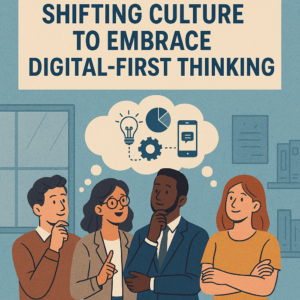Digital transformation is no longer just a tech initiative. It’s a business-wide strategy that touches every corner of a direct selling organization—from IT and marketing to sales, operations, customer service, and especially the field. But even the best tools and strategies fall short if there isn’t strong stakeholder alignment across the business.
Too often, digital initiatives stall not because the technology doesn’t work, but because people aren’t aligned. Executives may have competing priorities. Field leaders might resist changes that disrupt long-standing traditions. Even enthusiastic teams can struggle when they lack a shared language or vision.
So how do you bring everyone together and keep them moving forward? The answer lies in intentional, early, and ongoing stakeholder alignment.
Why Stakeholder Alignment Across the Business Matters
Direct selling organizations are uniquely complex. They rely on a mix of internal departments and independent field representatives. This means any significant change—especially something as impactful as digital transformation—requires buy-in from a wide range of voices.
When stakeholders across the business are aligned:
- Decisions are made faster and with more confidence
- Change feels collaborative rather than top-down
- Field leaders become advocates, not skeptics
- Silos break down, and cross-functional innovation becomes possible
Alignment isn’t just about agreement. It’s about shared understanding, trust, and accountability.
Start with the C-Suite: Setting the Tone from the Top
Strong digital transformation begins with a unified executive team. Before launching any initiatives, the C-suite should:
- Define a clear vision for transformation
- Identify key business outcomes (e.g., better rep onboarding, stronger customer engagement, data-driven decision-making)
- Agree on metrics of success
This alignment becomes the foundation for communicating purpose and direction to the rest of the business. Without it, departments may pull in different directions, slowing or even derailing progress.
Co-Create with Cross-Functional Leaders
Transformation can’t live in one department. It requires input and ownership from multiple functions. Bring together leaders from IT, marketing, field development, training, operations, and sales early in the planning process.
Facilitate collaborative workshops where these teams:
- Map out how digital change will affect each function
- Identify dependencies and risks
- Align on shared goals and timelines
This co-creation process not only surfaces valuable insights but also builds a sense of shared ownership—critical for long-term success.
Involve Field Leaders from Day One
Too often, direct selling companies wait until rollout to involve their field. That’s a mistake.
Field leaders hold tremendous influence. If they aren’t part of the transformation conversation from the start, they may resist changes they don’t understand or didn’t help shape.
Instead, invite trusted field representatives into early discovery and planning:
- Use surveys or focus groups to gather input on pain points and opportunities
- Pilot new tools or platforms with small, engaged groups
- Highlight and reward early adopters
When the field sees that their voice matters, they’re more likely to champion change.
Use a Shared Language and Vision
One major barrier to stakeholder alignment across the business is miscommunication. What digital means to IT may not resonate with sales or the field. That’s why it’s essential to build a shared language.
Create messaging and visuals that simplify complex ideas:
- Use storytelling to show how transformation benefits every part of the business
- Translate technical terms into clear, outcomes-based language
- Align all communication around the customer and field experience
Consistency in communication reduces confusion and builds confidence.
Make Stakeholder Alignment an Ongoing Practice
Initial alignment is just the start. Stakeholder alignment across the business must be an ongoing priority throughout the transformation journey.
Ways to keep alignment strong:
- Hold regular cross-functional check-ins
- Share progress updates, wins, and lessons learned
- Use dashboards to provide visibility into KPIs
- Create forums where feedback can be gathered and acted on quickly
Alignment isn’t a one-and-done meeting. It’s a mindset and a muscle that must be exercised over time.
The Stakeholder Alignment Payoff: Trust, Speed, and Shared Success
When digital transformation is grounded in stakeholder alignment across the business, everything moves more smoothly. Teams trust each other. The field feels respected and heard. Executives see results faster.
More importantly, the entire organization starts speaking the same language—one focused on the future, innovation, and growth.






